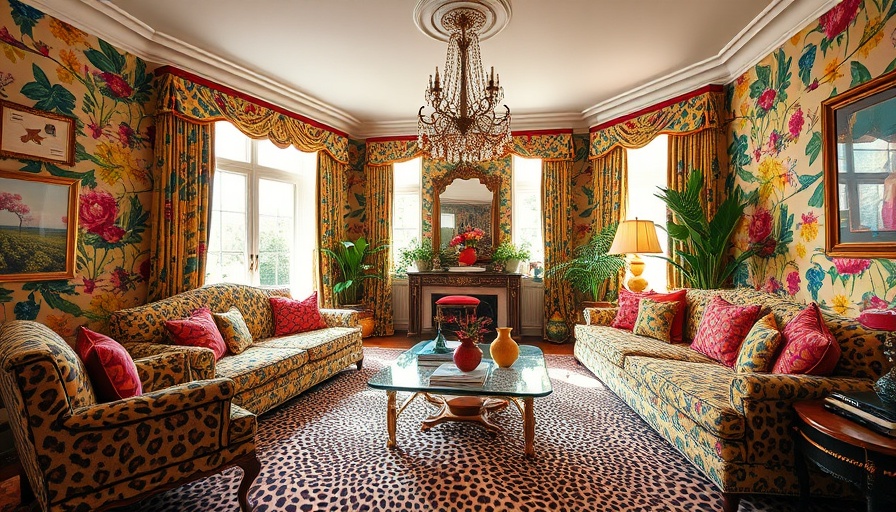
Unleashing the Wild: Exploring the Allure of Animal Prints
Animal prints have made a grand return to the interior design scene, offering an exquisite blend of nostalgia and bold expression. These timeless patterns, once relegated to the realm of kitsch, are now hailed as symbols of sophistication, glamour, and an adventurous spirit. Designers such as Corey Damen Jenkins and Danielle Rollins are embracing these prints in creative and unexpected ways, inviting homeowners to infuse their spaces with character and life.
The Timeless Appeal of Animal Prints
Graphic and striking, animal prints transcend trends to connect us to nature, culture, and history. “Animal prints are our oldest known textiles,” states designer Corey Damen Jenkins, illustrating their deep-seated connection to human emotion and identity. With their roots in the earliest days of human habitation, these prints can evoke feelings of authenticity and a sense of belonging. As explored by designers like Sasha Bikoff, every print tells a story—one of adventure, elegance, or even whimsy. From a leopard print rug that brings warmth to a modern sleek interior to zebra stripes that inject energy into a playful space, each choice is an opportunity for expression.
Elevating Spaces with Animal Prints
Much like how fashion continues to evolve, the incorporation of animal prints in home design has become a fashionable art form. Designers are not shy about wrapping entire walls with exotic prints, as demonstrated notably in Jenkins’ dining room project adorned with Ralph Lauren’s luxurious leopard-patterned wallpaper. This daring choice breaks conventional design norms and helps to create an intoxicating atmosphere that effortlessly blends the traditional with the contemporary.
Celebrating Cultural Connections Through Design
For many designers, the appeal of animal prints also stems from cultural significance. For instance, Bikoff's connection to Middle Eastern art through tiger prints reflects much more than just a visual choice; it encapsulates personal narratives and heritage. Each project can become a canvas reflecting its inhabitant's character, engaging guests in meaningful dialogue. Choosing the right animal print can inherently align with the local landscape or personal backstory, amplifying authenticity within the design.
Design Tips: How to Tastefully Incorporate Animal Prints
For potential clients embarking on a remodeling journey, understanding how to incorporate animal prints is essential. Here are a few tips from the experts:
- Start Small: If unsure about bold patterns, consider starting with smaller items like throw pillows or a chic accent chair upholstered in animal fabric.
- Mix with Neutrals: Pair animal prints with a neutral color palette to maintain balance in your space, allowing the prints to pop without overwhelming the senses.
- Context Matters: Utilize prints that resonate with your surroundings. For instance, a cow print might beautifully complement a farmhouse aesthetic in the countryside, while sleek tiger stripes may fit perfectly in a modern metropolitan home.
Common Misconceptions About Animal Prints
One prevalent myth is that animal prints must always evoke a maximalist style. However, interiors can be beautiful and serene even with these bold patterns. The key lies in thoughtful selection and strategic placement, dismissing the idea that animal prints are only for extravagant settings. They can enhance minimalistic designs by injecting an unexpected twist, inviting warmth and interest without compromising the overall aesthetic.
Final Thoughts: The Future of Animal Prints in Interior Design
The resurgence of animal prints signifies a broader desire to move beyond sterile, cookie-cutter environments towards spaces that tell unique stories. As the modern homeowner seeks more individualized and expressive living environments, designers are embracing the delightful chaos that animal patterns can bring.
Are you ready to venture into the wild side of home design? Let us design, plan, and build your next home or remodel at 831-521-7729.
 Add Row
Add Row  Add
Add 




 Add Row
Add Row  Add
Add 

Write A Comment